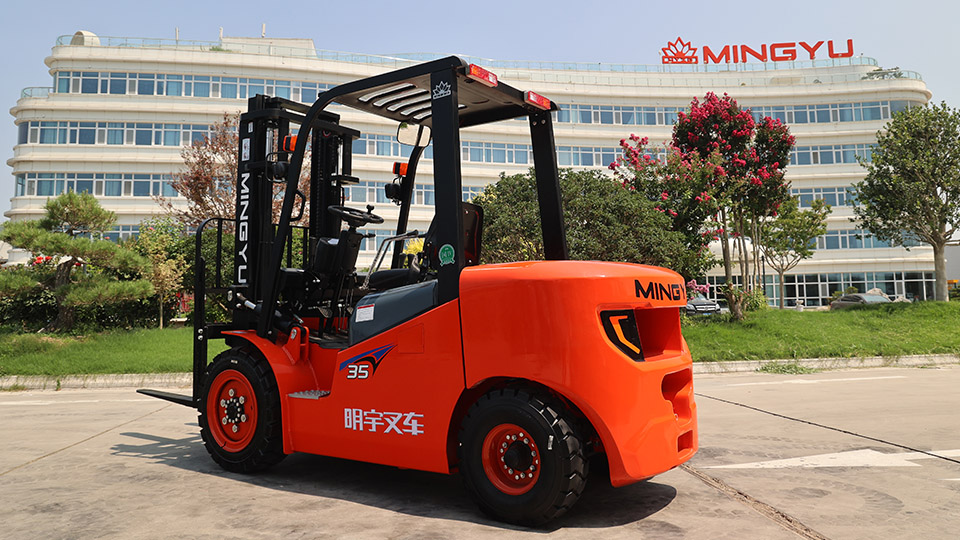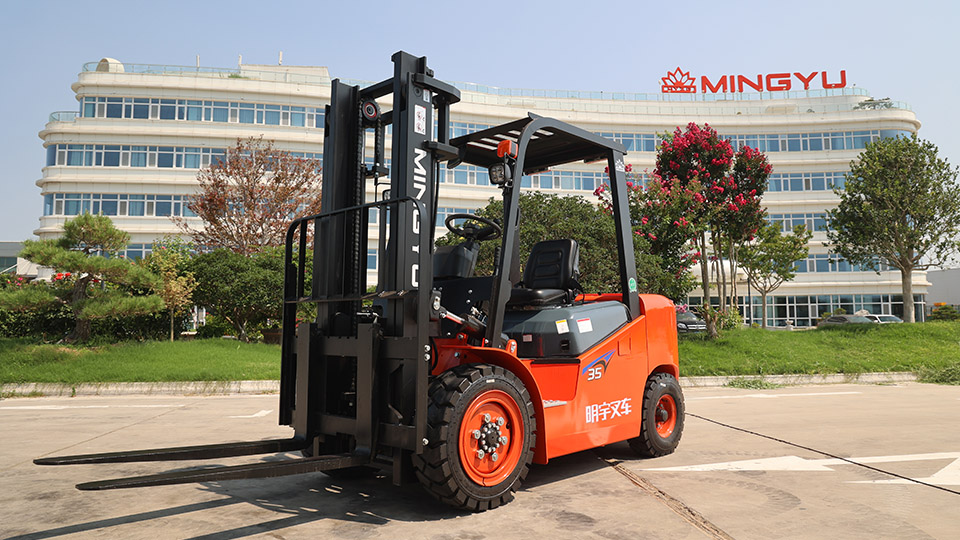
The Thirsty Truth: Understanding Water Requirements in Electric Forklifts
Electric forklifts have become a mainstay in modern warehousing and material handling, prized for their quiet operation, zero tailpipe emissions, and often lower operating costs compared to their internal combustion engine (ICE) counterparts. However, a common point of confusion, and sometimes neglect, revolves around their power source: the battery. Specifically, the question often arises: Do electric forklifts need water?
The straightforward answer, for the vast majority of electric forklifts utilizing lead-acid batteries, is a resounding yes. Water plays a crucial role in the chemical processes that allow these batteries to store and release energy. Understanding why, how much, and what type of water is required is essential for ensuring optimal performance, extending battery lifespan, and maintaining a safe operating environment.
The Heart of the Matter: Lead-Acid Battery Chemistry
While the chemical reactions themselves demonstrate the involvement of water, its importance extends beyond just being a reactant and product:
Maintaining Electrolyte Level and Concentration: The electrolyte level must be sufficient to fully submerge the battery plates. If the level drops too low, parts of the plates will be exposed to air, leading to oxidation, sulfation (the formation of hard lead sulfate crystals that reduce battery capacity), and ultimately, premature failure. Furthermore, the concentration of sulfuric acid in the water needs to be within a specific range for optimal performance. Water loss through evaporation and electrolysis (explained below) alters this concentration.
Heat Dissipation: During both charging and discharging, lead-acid batteries generate heat due to internal resistance. The water in the electrolyte helps to dissipate this heat, preventing excessive temperature rise that can damage the battery components, accelerate corrosion, and even pose a safety risk.

The Culprit: Electrolysis and Evaporation
The primary reasons why electric forklift batteries lose water are electrolysis and evaporation:
Electrolysis: During the charging process, especially towards the end of the cycle when the battery is nearing full charge, a phenomenon called electrolysis can occur. If the charging voltage is too high, water in the electrolyte can be broken down into hydrogen (H
These gases vent from the battery cells, resulting in a gradual loss of water from the electrolyte. Overcharging is a significant contributor to excessive electrolysis.
Evaporation: Even under normal operating conditions, some water will slowly evaporate from the battery cells, especially in warmer environments or during prolonged use that generates heat. While less significant than electrolysis in a healthy battery system, evaporation still contributes to water loss over time.
The Consequences of Neglecting Water Levels:
Failing to regularly check and replenish the water levels in lead-acid forklift batteries can lead to a cascade of negative consequences:
Reduced Battery Capacity and Runtime: Low electrolyte levels expose the plates, reducing the active surface area available for chemical reactions, thus diminishing the battery's ability to store and deliver energy. This translates to shorter operating times between charges.
Increased Risk of Sulfation: Exposed plate areas are more susceptible to sulfation, a leading cause of premature battery failure. Sulfated batteries lose their ability to accept and hold a charge effectively.
Overheating and Thermal Runaway: Insufficient electrolyte reduces the battery's ability to dissipate heat, leading to higher operating temperatures. Excessive heat can accelerate corrosion, damage internal components, and in extreme cases, trigger thermal runaway – a dangerous condition involving uncontrolled temperature increase and potential fire or explosion.
Shorter Battery Lifespan: Consistent neglect of water levels significantly shortens the overall lifespan of the battery, a substantial capital investment for any operation.
Increased Maintenance Costs: Damaged batteries require more frequent maintenance and eventual replacement, leading to higher operational costs.
Safety Hazards: Low electrolyte levels can increase the concentration of sulfuric acid, making the battery more corrosive. The venting of hydrogen and oxygen gases during electrolysis creates a potentially explosive mixture if not properly managed through adequate ventilation.
The Solution: Diligent Watering Practices
Maintaining the correct electrolyte level is crucial for the health and longevity of electric forklift batteries. Here are key aspects of proper watering practices:
Frequency of Watering: The frequency depends on factors like the battery's age, usage intensity, charging practices, and ambient temperature. Newer batteries may require less frequent watering, while older or heavily used batteries will need more attention. Regular inspections, ideally weekly or after a certain number of charge cycles, are essential. Many modern batteries have indicators or automated watering systems to simplify this process.
Timing of Watering: Always water batteries after they have completed a full charge cycle, not before. Watering before charging can cause the electrolyte level to rise during the gassing phase of charging, potentially leading to overflow and loss of acid, as well as diluting the electrolyte prematurely.
Type of Water: Only use distilled or deionized water. Tap water contains minerals and impurities that can react with the battery components, leading to the buildup of sediment, reduced capacity, and shortened lifespan. Using the wrong type of water is a common mistake that can have significant long-term consequences.
Watering Procedure:
Ensure the battery charger is disconnected and the forklift is turned off.
Remove the vent caps from each cell.
Carefully add distilled or deionized water to each cell until the electrolyte level reaches the bottom of the vent well or the indicator mark, if present. Avoid overfilling.
Replace the vent caps securely.
Wipe down the battery top with a damp cloth to remove any spills or residue.

Automated Watering Systems: For larger fleets or operations seeking to reduce manual maintenance, automated watering systems offer a convenient solution. These systems connect all the battery cells to a central reservoir of distilled or deionized water and automatically fill them to the correct level. While requiring an initial investment, they can save time, reduce the risk of over or under-watering, and contribute to longer battery life.
The Exception: Lithium-Ion Batteries
It's important to note that the water requirement discussed above primarily applies to electric forklifts utilizing lead-acid batteries. A growing segment of the market is transitioning to forklifts powered by lithium-ion batteries. These batteries employ a fundamentally different chemistry that does not involve a liquid electrolyte in the same way as lead-acid batteries. Therefore, lithium-ion forklift batteries do not require regular watering.
Lithium-ion batteries are typically sealed units and do not experience significant water loss through electrolysis or evaporation in the same manner as lead-acid batteries. In fact, adding water to a lithium-ion battery would be detrimental and potentially dangerous. These batteries have their own specific maintenance requirements, which typically focus on thermal management and monitoring the battery management system (BMS).
Conclusion:
For the vast majority of electric forklifts powered by lead-acid batteries, water is an essential consumable. Neglecting to regularly check and replenish the electrolyte with distilled or deionized water can lead to reduced performance, decreased lifespan, increased maintenance costs, and potential safety hazards. Implementing proper watering practices, including using the correct type of water, watering at the right time, and maintaining the appropriate fill levels, is crucial for maximizing the investment in electric forklift batteries and ensuring safe and efficient material handling operations. As the adoption of lithium-ion technology grows, the need for manual watering will diminish for those fleets, but understanding the specific maintenance requirements of each battery type remains paramount. The "thirsty truth" for lead-acid batteries is clear: regular hydration is key to their long-term health and productivity.
Name: selena
Mobile:+86-13176910558
Tel:+86-0535-2090977
Whatsapp:8613181602336
Email:vip@mingyuforklift.com
Add:Xiaqiu Town, Laizhou, Yantai City, Shandong Province, China